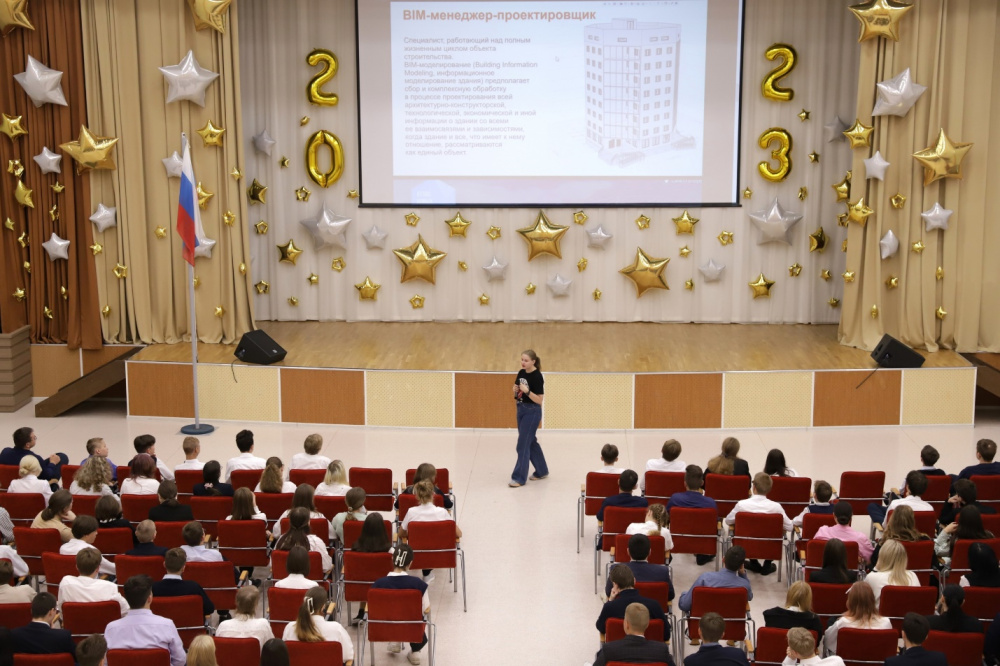 Olga Chernyadyeva, head of the ASCON educational program, at the coordination meeting at school No. 100
Olga Chernyadyeva, head of the ASCON educational program, at the coordination meeting at school No. 100
In April, at the VI International Scientific and Practical Conference “BIM Modeling in Construction and Architecture Problems,” SPbGASU signed cooperation agreements with Renga Software (a joint venture of ASCON and 1C companies) and secondary schools No. 347 and No. 334 of the Nevsky District, No. 100 of the Kalininsky district, No. 255 of the Admiralteysky district, Lyceum No. 64 of the Primorsky district of St Petersburg on the joint implementation of pre-vocational education programs in technological (engineering) classes for the study of information modeling technologies (“TIM classes”).
The goal of the project is to create conditions for the preparation of highly motivated students by introducing eighth to eleventh grade schoolchildren to information modeling in construction and architecture. In the process of studying in TIM classes they will master:
- basic drawing skills;
- fundamentals of architectural and construction structures and engineering systems of buildings;
- building information modeling in the Renga program.
In September, the schools held coordination meetings and the first classes with the participation of the dean of the SPbGASU Faculty of Environmental Engineering and Municipal Services Inna Sukhanova, the director of the SPbGASU laboratory of digital building information models Denis Nizhegorodtsev and the head of the ASCON educational program Olga Chernyadyeva.
Based on the schools' feedback, it was decided to take an individual approach to planning the educational schedule. For example, at Lyceum No. 64 classes will be held in the form of a summer intensive course.
The classes at schools will be taught by university teachers from the Departments of Architectural and Engineering Constructions, Informatics, Metal and Timber Constructions, Heat and Gas Supply and Ventilation.
Alena Vedernikova, senior lecturer at the Department of Architectural and Engineering Constructions, teaches classes at schools No. 347 and No. 334. “First of all, the benefit of such classes is in the early career guidance of schoolchildren. In a few years, they will have to choose a profession, and this is quite difficult when there is no idea what a specialist in a particular field does. TIM classes are a good start to understand your attitude towards engineering, in quite a broad scale: many engineering professions involve working on a computer with 3D models. As a result, applicants will come to construction and technical universities consciously, already having an idea of their future profession,” she notes.
Olga Ushakova, mother of an eighth-grade pupil at school No. 347, says: “I’m glad that our school ensures continuity of educational programs between the school, the university and the industry company. Many thanks to the management of SPbGASU, ASCON and our native school for the wonderful opportunity for our children to gain pre-professional knowledge and skills, to choose a future profession while still studying at school.”